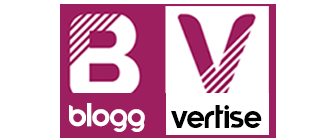Graphic designing is a profession of craft where people communicate visually to social groups. It requires creativity and skills. By following visual hierarchy and page layout techniques, designers can meet users’ certain needs and display elements in interactive and multimedia designs. All professional logo design services and skilled freelance designers attract clients through the perfect combination of colors, images, and typography. Graphic designers work in communication is to interpret, order, and present visual messages. They have communication skills to convince the audience and sell their designs.
Graphic designing is applied in the entertainment industry, such as scenery, visual story-telling, and decoration. Other examples are novels, vinyl album covers, DVD covers, and comic books. Presentation of opinions and facts with graphics and visuals is known as information design. It includes magazines, newspapers, blogs, film documentaries, and television. It indicates that this profession has a broad scope that is increasing rapidly and taking over conventional methods. In short, when you say graphic designing, you are talking about everything associated with the designing world, from business stationery design to logo design and web design services.
Here are the eight graphic designing tips that will help you become an influential designer.
1. Visual balance maintaining
Startups with decent budgets prefer professional web and logo design services because they need a balanced design for their business. So, there should be a balance maintained in graphic designs and visual elements. A balanced design covers visual weights of elements to create cohesiveness, completion, and satisfaction. In this way, it will look good to everyone.
2. Use templates
All web design services providers rely on templates to finish projects professionally within the deadlines. Templates are known as predefined graphics that have been created to save designers time. For non-graphic designers, a template is one of the most valuable assets and provides complete flexibility in editing. A template design is consist of layers, colors, fonts, text, and their sizes.
3. Use of white space
White space is the distance around or the area between the design object and elements. It creates emphasis on specific elements of the composition. The legibility and readability of the text are also increased by adding space. Professional logo design services use white space between designs to give a cleaner look. Besides, it will also lead the viewer’s focus and emphasizes the features of the page.
4. Alignment
Alignment refers to the lining up of texts or graphics on a page and is largely invisible. It helps create order, organize elements, visual connections, and improve the design’s readability. Make sure that all the details in the graphics are perfectly aligned. Otherwise, the overall image will not look good. For instance, if you invest in any web design services provider to build a site for your brand and they hand over you the poorly-aligned design, what will be your reaction? You might get furious and start bashing them. So, to keep yourself away from such a situation, always create a well-designed site.
5. Contrast
In order to create an image that communicates the message effectively, contrasts of light, color, clarity, size, and texture are often used by graphic designers. It organizes your design, establishes a hierarchy, and attracts eyes. What’s more? There are many forms of contrasts available out there and used by both emerging and leading web and logo design services. The color contrast of elements must be appropriate. A specific color palette can give a thematic look to the design.
6. Fonts
Fonts are letters that logo design services and freelance graphic designers use to put text on images and videos. Fonts can change the appearance of any text. They come in different shapes and sizes. Try not to use more than two fonts in a single graphic design. You need to know about some common types of fonts.
• Serif fonts: Serif fonts have tiny strokes attached to the letter’s central part. They are suitable for traditional projects because of their classic look and are common in print publications like newspapers and magazines.
• Sans serif: This style is cleaner than serif fonts and easy-to-read on computer screens like laptops and smartphones.
• Display fonts: Display fonts have decorative nature. That is why they are best for the small amounts of texts like in headers, titles, and graphic-heavy designs.
7. Add Pictures
It has been said that “A picture is worth more than a thousand words.” Images help create a connection with the text and clarify the information presented in a layout. So use a suitable image in the graphic design according to the requirement. Also, make sure not to use the copyright image.
8. Impact of Colors
Psychology says that colors affect emotions, moods, and the behavior of humans in subtle ways. Every color influences differently over viewer’s mind. So, choose them cautiously in the graphic design. Following are some meanings of colors.
- • Green: Nature, health, and harmony
- • Black: Elegance and style
- • Grey: Professionalism
- • Red: Passion, love, and energy• Purple: Luxurious and mysterious
Good Read: Complete Study Guide For Microsoft Azure Fundamentals AZ 900







Leave a Reply